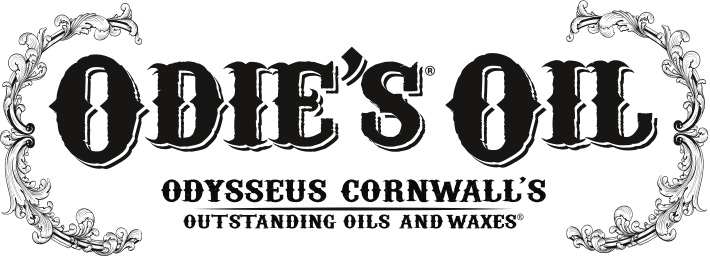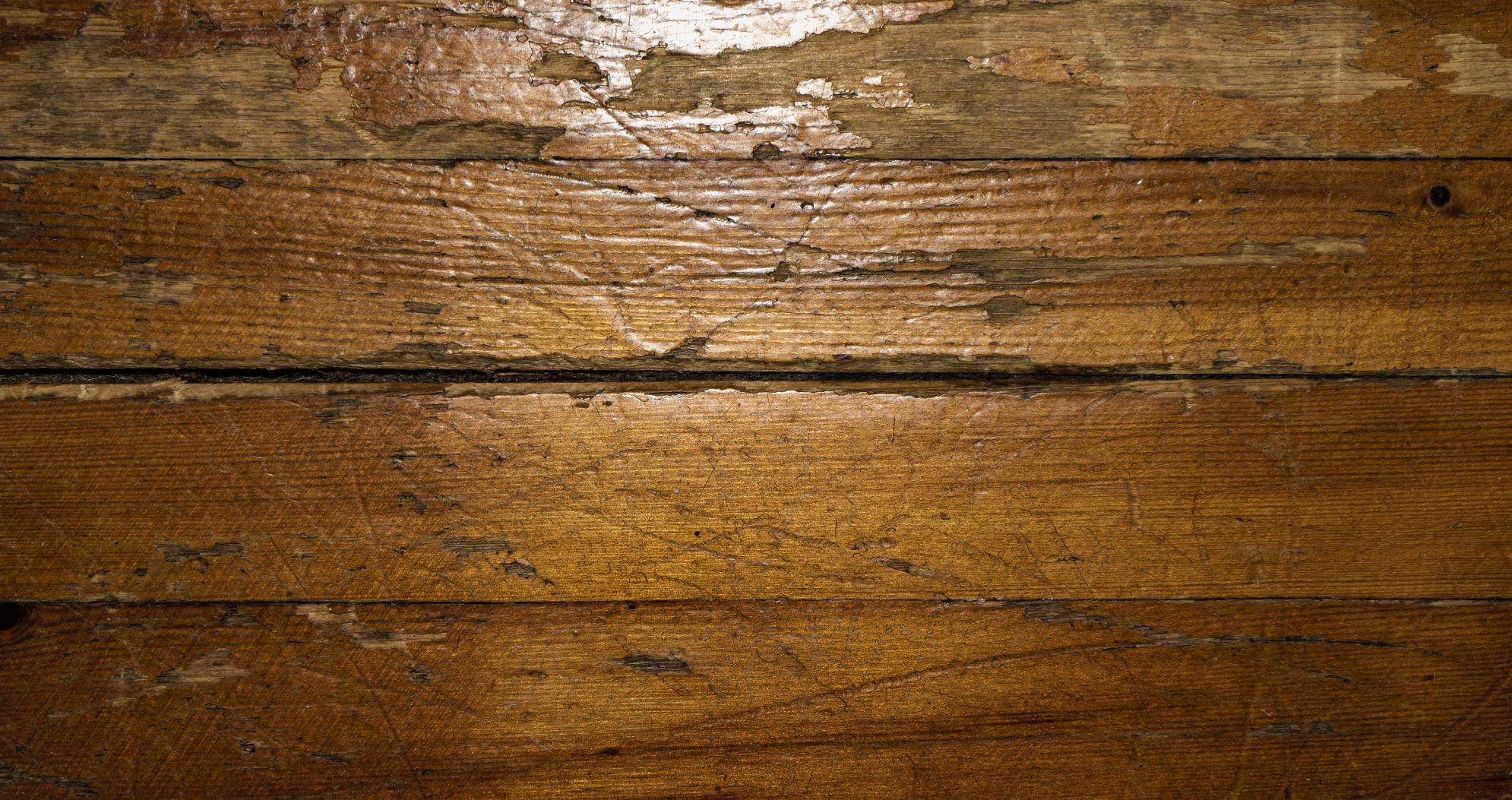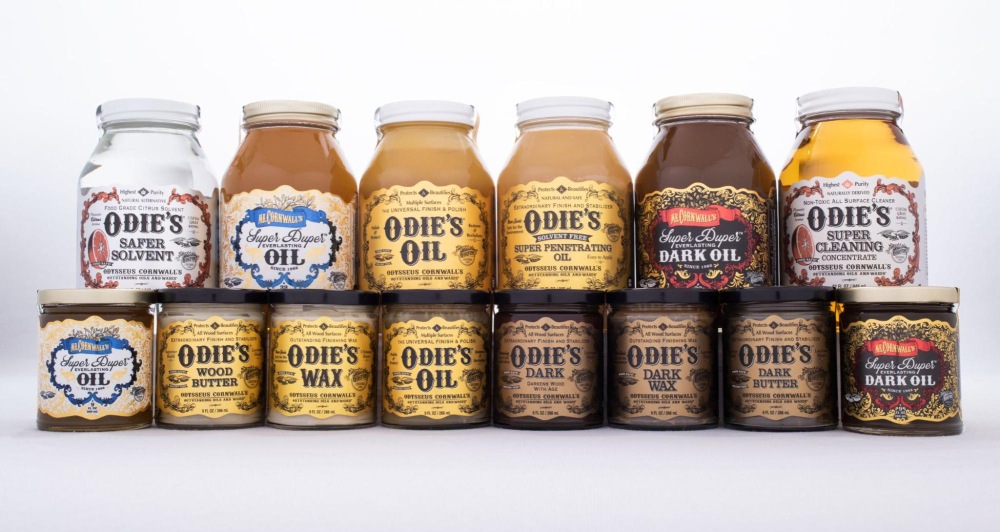You may recall that in our first blog about the lies of big chemical, we promised to talk about each category of finishes. Before we drill down to very specific finish modalities, I believe it is a good idea to talk about the largest legacy category of finishes – film forming finishes, which included varnish, polyurethanes, some shellacs, pseudo-wax/oil (“Euro-finishes”), UV catalyst finishes, water-based finishes, and other types if urethane and film forming finishes. Remember as we explained in a previous blog, oil finishes that contain a part two catalyst are actually a polyurethane finish and this includes the ever popular brands of Euro (pseudo) oil/wax finishes.
Let me just come out and say it, they are all planned obsolescence finishes, and they represent an outlet for chemical industry and petroleum industry waste by-products. Since they are intended to fail and the surfaces need to be stripped down and refinished – they are for chemical companies the gift that keeps on giving, a golden goose, constantly generating new sales, repeat sales, and bigger profits. Isn’t it wonderful to be taken advantage of? Those who are offended by such statements, well they are either invested and profiting from this scam or they are simply unwitting captives with a bad case of Stockholm syndrome.
Some may wonder; how are they intended to fail or why are they going to fail and what constitutes failure? Well, a finish getting tired looking may or may not constitute failure, and I would say the way to determine that is whether or not you can simply apply more atop and it’s all good again. But if you have to strip it with chemicals or by sanding it off, well then that is clearly a failure. If it peels, flakes, discolors, yellows, turns whitish and cloudy, if it scratches and leaves an unsightly whitish colored scratch or break in the plastic coating then it is surely a failed finish and one made to fail in the first place. Why can I say it was made to fail? Well, for one – setting aside the obvious financial profiteering reasons of reselling more finish and stripping chemicals, there is no reason that a finish that won’t fail can’t be made and sold. In fact, there has never been a time in the past three hundred years when such a finish could not be made. Our finish is the ultimate expression of just what can be made with altruism and optimum quality as the driving force.
Since we at Odie’s Oil are not tied to the chemical industry as a producer of products that generate toxic waste byproducts or any byproducts at all, we were able to make the ideal finishing product-line. The competitors in the chemical finish business won’t do it because it simply doesn’t serve their purposes of reappropriating their nasty waste products. Nor does it provide them with their cash-cow or golden goose of planned obsolescence just like so-called “engineered flooring” which is simply engineered for failure, lower production material cost, and returning profits. Our business model simply doesn’t sync with theirs. So, that is one of the most fundamental things that makes Odie’s Oil the real deal. We have no ulterior motivations other than first and foremost to make the worlds’ best finish product, something that won’t fail, that will last and endure use for the maximum possible time. We don’t believe in coating the world in toxic waste, but I can tell you that is essentially the slogan of one of the largest coating producers, to coat the planet! How wonderful! It’s enough to make you sick, I feel the disgust in my gut every time I think about it, and even worse it truly does make for a sick population and an ever more toxic planet.

So how does one know if they are looking at a film forming finish or not? There are a few obvious tip-offs, but there are also some more subtle or hidden clues which may require looking at the label or the Safety Data Sheets. Let’s look here at the clues specific to film forming finishes:
INSPECT THE LABEL
– Look at the ingredient label, look for chemicals like isocyanates, acrylics and acrylates, acrylamide, alkyds, mineral spirits, naphtha, petroleum distillate, toluene, xylenes, benzene and its derivatives, cobalt dryers, Japan dryers (siccative), chromium, and/or any aromatic hydrocarbons among other chemical chimeras. You get the idea…
– Warnings on the label such as noxious fume warnings, skin contact warnings, and warnings about cancers, contact dermatitis, and potential lung or respiratory damage.
– Does the product label or instructions urge users to wear protective gear such as gloves, goggles, and respirators?
– Look for part two catalysts, driers, and hardeners .
INSPECT THE SURFACE
• Does the finish create plastic-like coating on top of the surface?
• Are surfaces previous treated showing any of these signs?:
-peeling
-discoloration or yellowing
-delaminating or paneling
-trapped dust
-orange peel texture
-bubbling
-flaking
-separating and lifting
-turning milky, or white in places
-decomposition (such as is often seen at the bottom panels of an exterior door, a deck, or weather exposed surface
-wearing off such as along the edges of cabinet doors
-making unsightly and unnatural scratch marks that show broken surface coating and not simply a scratch in the wood or treated surface itself
-If you see any of these things happening to a surface, you can be assured it was treated with a film-forming finish. The result of this is that you or your contractor will have a ton of work to do to repair it and will be exposed to toxins, this includes the follow processes:
-Chemical stripping and clean-up
-Sanding and exposure to the toxic dust of the coating material
-Reapplying chemically modified finishes, and clean-up
So, what are the alternatives?
There are some more-natural finishes available, and of which have been available for centuries. However, most of them are not quite complete, nor protective enough for many surface treatment projects.
These finishes include:
– Wax (natural or chemically modified such as Bees wax and branded wax/chemical blends)
– Oils such as Linseed, Tung, Safflower, Mineral, Soy, and others
– Danish Oil (many of which are loaded with toxic ingredients, only a few raw oils are exempt from this)
– Natural shellac
Some of these represent quite noble efforts to provide safer alternative finish materials, but unfortunately most of them are either too weak to be durable or have been chemically modified to create more deception than anything else. You have seen the brands in the market, from the legacy brands to the new-fangled scams and poor attempts at offering something natural. And we also want buyers to understand that putting a different use label on a product such as pan oil, or shoe oil, doesn’t make it any better for that particular application. The reason is that a finish either performs on the technical level the way that makes finishes maximally protective, durable, and beautifying or it doesn’t; and if it does, then it will do that very well on a wide variety of surfaces and if it doesn’t then it is an inferior finish, period.
The mechanism behind film forming finishes is to create a layer that separates users from the original surface, and this seems to be the only way they see fit to protect such surfaces.
Why do that when there are better ways?
So, the concept of film forming finishes does not hold up to conceptual scrutiny with the exception of paints which offer aesthetic applications serving a different purpose and is a totally different matter. However, the bottom line on all film forming finishes is that there is a fundamental weakness and that is the bond between the coating material and the surface that it is applied, in addition to the propensity of the finish coating to break-down over time.
Since wood (or other surface media) and the plasticized coating move at different rates the bond is weakened, especially when exposed to variations in environmental humidity and temperature. There is another inherent weakness and that is in the chemical bonding amongst the ingredients themselves, so you have two immediate areas or critical control points, two opportunities for product failure and degradation. In other words, the chemical components must bond together in order to make the surface coating material itself, and then that plastic-like layer must then adhere and hold fast to the surface. We’ve all likely experienced what happens when a paint or finish isn’t properly stirred, or when it gets too old and begins to separate and go bad. This is a gross or macro demonstration of the basic principle of chemical bonding failure and it similarly can occur in the micro-level in chemical-based finishes before or after application. That is one reason why some finish formulations appear to be superior to other, it is largely dependent upon the proficiency of the chemistry applied in formulation and manufacturing processes. Still, just about all of these materials are dependent upon noxious chemical catalyst, bonding agents, hardeners, and dryers. So, the average consumer, contractor, or fabricator is tasked with working with a toxic soup with inherently built-in challenges when it comes to their ability to hold together and also bond to and protect surfaces. We have to ask ourselves, isn’t there a better way, and why hasn’t it been offered to the marketplace for all these past decades?
To date, there is only one finish that meets all criteria for being the best possible finish for every application. That finish is Odie’s Oil and its variants such as Mr. Cornwall’s Super-Duper Oil. We’ve written and spoken about the scientific foundations including both the chemistry and physics of the Odysseus Cornwall’s, aka Odie’s Oil products in prior videos, blog posts, and in our product information documents. Other than explaining that our finishing modality is the antithesis of the planned obsolescent chemical waste products commonly called surface finishes like polyurethanes and others that we all know.
Well, we believe our reputation is currently that we are the world’s best finish. And we are completely confident that Odie’s Oil and Mr. Cornwall’s Super-Duper Oil will be the world’s best-selling finishes. We are actually quite more well-distributed than it may appear because the OCOOW products cover ten to twenty times more surface area ounce per ounce than most all other finishes on the market. That means every step we take forward in distribution ubiquity represents an exponential increase in surface area treated with our safe, natural, and more durable products. To date, we have calculated that Odie’s Oil has been applied to hundreds of millions of square feet of surfaces including wood, concrete, and more. That is actually very good news for all, including consumers, the general public, our environment, and for the Earth itself! We are doing our part to help save the planet and users from toxic surface treatments, and we ask the reader to do the same – adopt Odie’s Oil as your finish of choice. It is more durable, more protective, super-easy to maintain and repair, and more beautifying. It does all this in a completely user-friendly, easy to apply manner, and it is totally safe to use entirely without exposure to toxic and noxious chemicals. Odie’s Oil is made to last and provide years upon years of durability and optimum performance.
Please try a bottle for yourself and be sure to follow our how-to instructions. Like Mr. Miyagi said to the Karate Kid, practice your wax-on wax-off technique and you will become a master yourself – and we might add a master of your own destiny, health, and well-being.
Happy Finishing!




